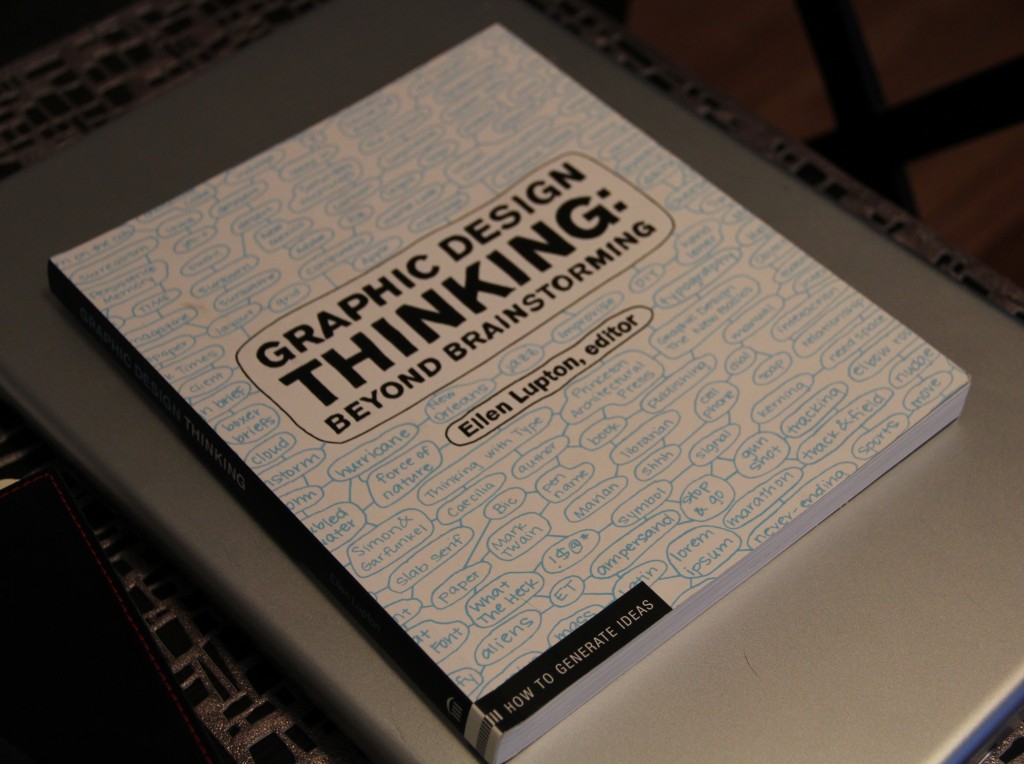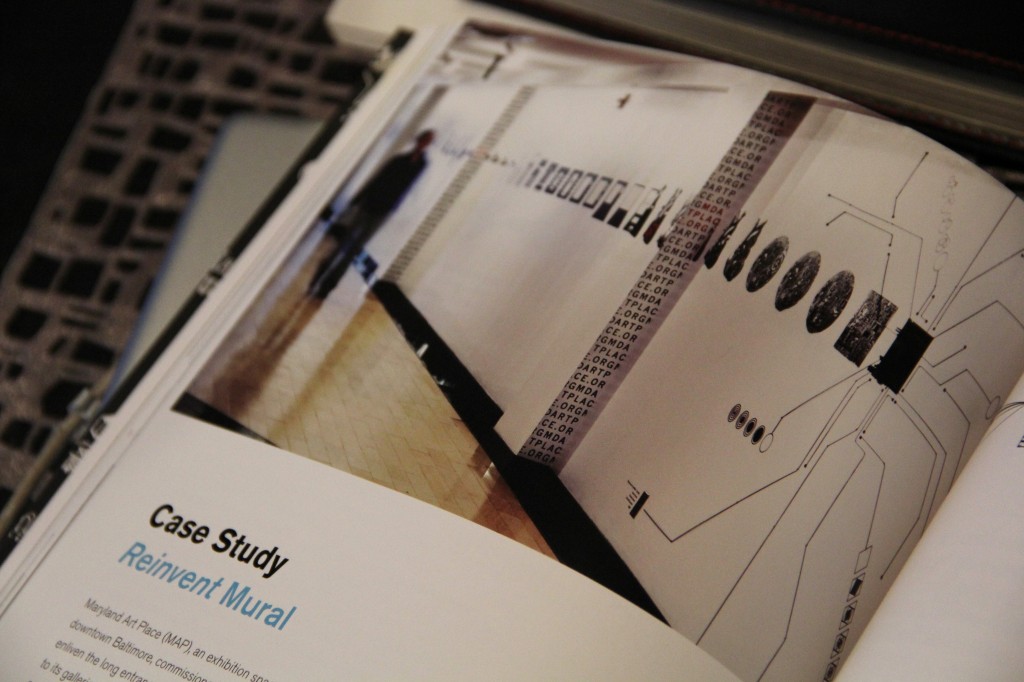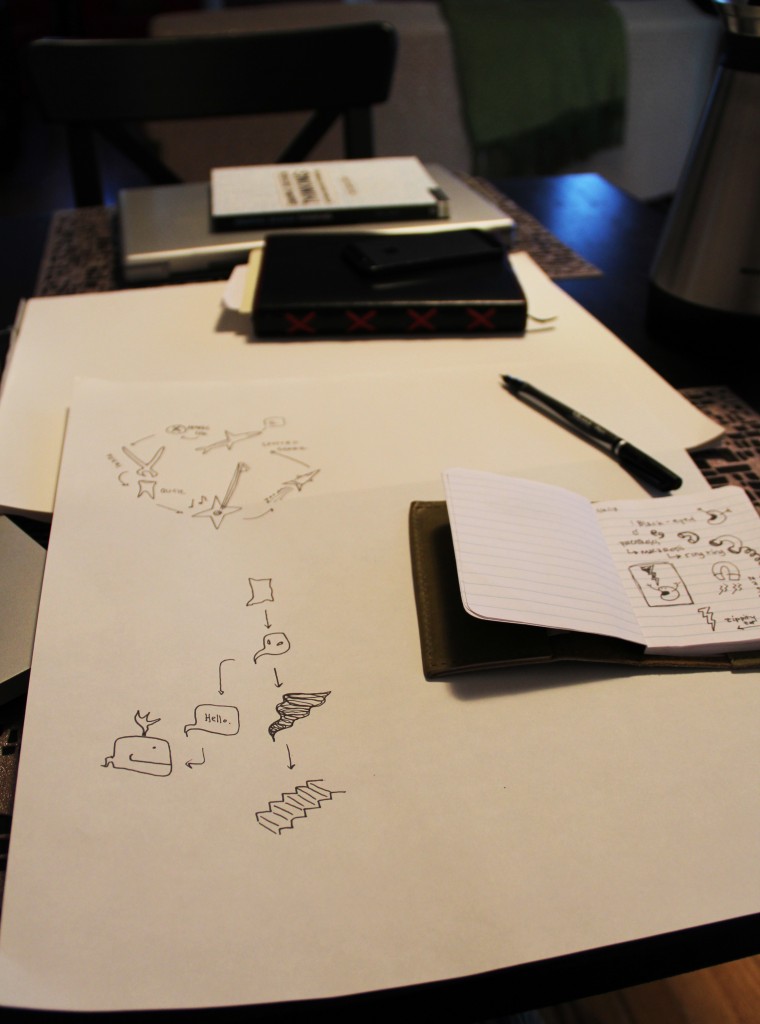Brainstorming can be a randomly beautiful thing, with no structure, just shouting it all out: a worthy idea appears. Sometimes that is enough. Other times, putting a new lens or technique on a problem is helpful. If you need more of that, I’d recommend checking out Graphic Design Thinking: Beyond Brainstorming by Ellen Lupton.
Many of the techniques will be familiar for creative agency types. Mind-mapping. Sprinting. Co-design. Each description is simple and concise, and as a whole, the book provides a great overview of techniques. Even if you already know them, no matter. Where the book really shines is the real world examples paired with each technique. It’s incredibly inspiring.
One example of collaboration, the Reinvent Mural really struck me. A group of designers collaborated to create a a series of images for a gallery installation. Each image leads to the next, a similar shape, but also something new.
It got me thinking of it as a sort of a visual version of the telephone game, or chinese whispers. Remember that old game? The one in which words are whispered into the next person’s ear, on down the line, and then, ta da! Out the other end comes, more often than not, an entirely different word or phrase.
It might be a silly child’s game, but it very effectively illustrates the potential for re-framing, even total warping in human communication. Each individual perception, each new touch has incredible power to shift things.
I played around with this idea in a quick sketching session. Oh, the strange paths that can unfold out of the brain!
The first:
Parentheses >; Black-eyed peas >; Macaroni >; Old school telephone handset >; Magnet >; Lightning bolt. This ended pairing the pea and the bolt, a bit of nonsensical fun.
Next:
From Indiana >; Creepy bird mask >; Tornado >; Stairs.
Or another path:
Indiana >; Thought bubble >; Whale.
Another:
X >; Pliers >; Tooth >; Rockin’ guitar >; Rocket >; Spotted shark.
This was a solo experiment, but as fascinating as it is to marvel at the leaps one mind can make, a group application is what I’m more interested in. For this experiment, I’d set it up so that only the first participant sees the source image, and each to follow would see only the most recent sketch in the series.
The reason I’m so taken with this is this: it reminds me of how brands evolve as they’re carried. As an organization, we may design a logo, choose our words or how we want people to feel, but the moment it’s out in the world, it gets touched, shaped and shifted by others. Customers, fans, friend or foe can perceive what they will and share your brand with others through their own filter. Like it or not.
Think about this: if you were to telephone sketch your logo, where would it take you? If your customers or fans did it, where to then?


